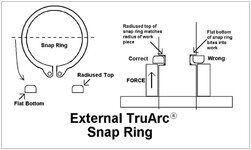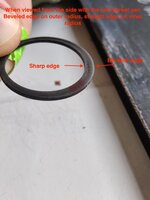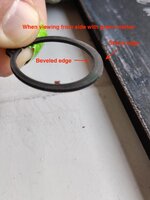wjb
Nitrous
- Joined
- Dec 16, 2019
- Messages
- 1,332
- Location
- California No Longer!
- Ride
- 2008 Rocket III Touring 2002 Bonneville America
Seems to me that a properly designed transmission is one that you can install a circlip in either orientation and be confident that it will hold it's place without fearing that gears are going to jump out and crash into each other. If Robinson's fix is to cut deeper grooves in the trans shaft with a corresponding sized circlip, well that shows a poor original design, to me anyway.



